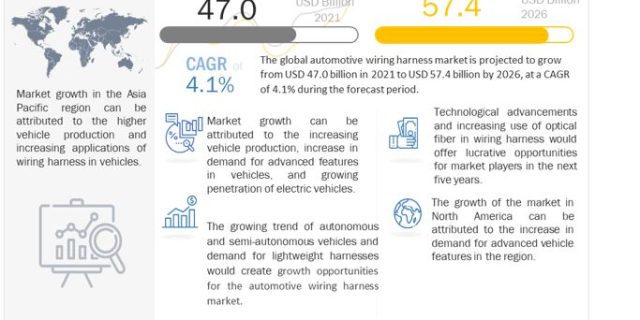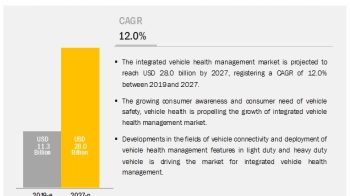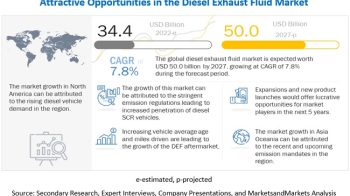
The global Automotive Wiring Harness Market is projected to grow from USD 47.0 billion in 2021 to USD 57.4 billion by 2026, at a CAGR of 4.1% during the forecast period. Increasing vehicle production, increase in demand for advanced features in vehicles, and growing penetration of electric vehicles are the major factors driving the growth of the automotive wiring harness market.
However, a projected recovery in Q1-Q2 of 2021 in vehicle production supports the growth of the automotive wiring harness market. According to the OICA (Organisation Internationale des Constructeurs d’Automobiles), passenger car production hit 55.83 million in 2020, with the Asia Pacific and North America estimated to be the leading regions.
The economic growth in China, India, and Brazil has improved consumer lifestyle, which, in turn, has impacted the sales of passenger cars, electric vehicles, and premium vehicles. With an increase in disposable income, the demand for premium vehicles has increased significantly.
Download PDF Brochure @ https://www.marketsandmarkets.com/pdfdownloadNew.asp?id=170344950
The passenger car segment is estimated to lead the market in terms of value during the forecast period due to the higher demand for automotive wiring harnesses in economy and premium vehicles with advanced features. The increase in vehicle production is the key factor driving the growth of the automotive wiring harness market in all types of vehicles. Technological advancements have also driven market growth in all vehicle types. ICE vehicles, especially passenger cars, are now equipped with advanced features and technologies to enhance passenger safety and comfort, and hence, more wiring harnesses are installed.
The body & lighting segment holds the largest share as passengers demand comfort and premium features, and with such features, the number of harnesses in the body & lighting increases. Also, to enhance the driving experience, many luxurious features are likely to be added in passenger cars and to suffice the requirement, dashboards are becoming the most interactive part of a vehicle. Manufacturers are introducing AR dashboards that require more wiring harnesses. The passenger car automotive wiring harness market in the body & lighting harness application is anticipated to grow from USD 9,436.3 million in 2021 to USD 12,016.0 million by 2026, at a CAGR of 5.0%.
The metallic segment holds the largest share in the automotive wiring harness market. OEMs mostly use copper for manufacturing automotive wiring harnesses due to high conductivity, limited corrosion, high tensile strength, and high data transfer. In recent years, with the increasing need for CO2 emission reduction, the demand for weight reduction has increased significantly. Also, the fluctuating copper prices have largely impacted Tier-I players in the market. Hence, in recent years, some manufacturers have been considering the use of aluminum in automotive wiring harnesses. The use of aluminum in automotive wiring harnesses with gold plating helps enhance data transmission and reduce weight and costs. For instance, in October 2021, Furukawa Electric developed aluminum wires in wiring harnesses, which are used in Toyota Boshoku seats and fitted in the new Toyota Land Cruiser 300. The wiring harnesses in seats use aluminum electrical wire in 115 of 152 circuits (an aluminum adoption rate of 75%), reducing weight by 44%
Request Free Sample Report @ https://www.marketsandmarkets.com/requestsampleNew.asp?id=170344950
The growing demand for premium vehicles is expected to increase the automotive wiring harness demand. This is because vehicle electrification and more advanced features would lead to more usage of connectors and electronics in the vehicle for its various functions. This is expected to drive growth for the automotive wiring harness market globally. Premium vehicle technologies are becoming affordable with time. These vehicles use electronic control units and other electronics that completely enhance the requirement of automotive wiring harnesses, thereby driving its market.
Electronic control units and infotainment electronics are installed in all types of vehicles. Thus, the increase in vehicle production will drive market growth for the automotive wiring harness. Additionally, upcoming trends in high voltage data transfer and specialty cables are expected to contribute to the growth of the market. Thus, the increase in demand for premium vehicles further rises the growth of wiring harnesses during the forecast period.
The increase in vehicle sales and manufacturing of mid-size premium vehicles have fueled the demand for automotive wiring harnesses. The rising electrification in vehicles and technological advancements are also expected to drive the automotive wiring harness market. Due to the presence of advanced technologies and features, premium vehicles have 40–50% more wiring harnesses than the economy segment. Increased demand has encouraged the manufacturers of automotive wiring harness to offer advanced wiring harness that helps in all automotive applications. The chassis harness segment is estimated to lead the market, in terms of value, during the forecast period due to higher demand for automotive wiring harnesses in chassis applications such as frame, air brake pump, suspension systems, and others.
Key Market Players:
Yazaki Corporation (Japan), Sumitomo Electric Industries (Japan), Aptiv PLC (Ireland), Furukawa Electric (Japan), and Leoni AG (Germany) are the prominent players in the automotive wiring harness market. These companies adopted new product development, and acquisition to gain traction in the automotive wiring harness market.
Speak to Analyst @ https://www.marketsandmarkets.com/speaktoanalystNew.asp?id=170344950


